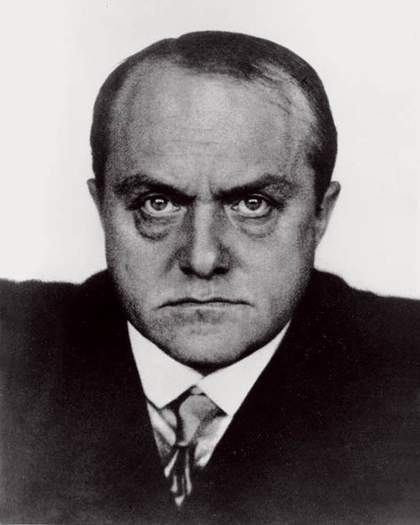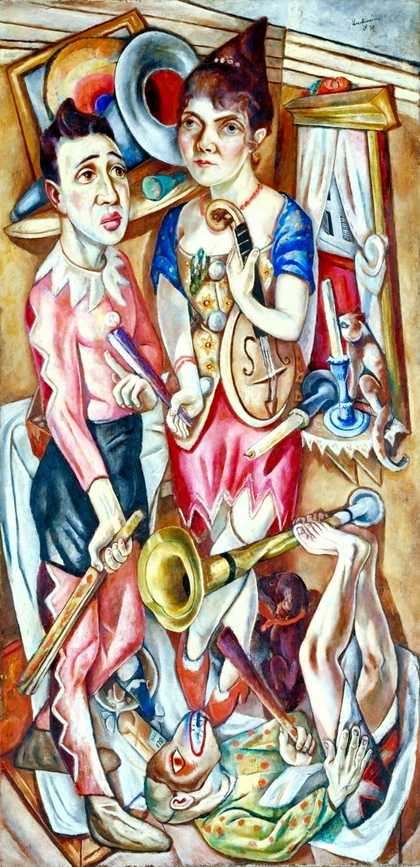Max Beckmann is widely acknowledged as one of Germany's leading twentieth-century artists. A figurative painter throughout his career, Beckmann depicted the world around him with an unparalleled intensity. His work emerges directly from his experiences of the First and Second World Wars, the political upheavals of the 1920s and 1930s, the rise of Nazism, exile in Amsterdam and his final emigration to the United States. By capturing the objects and events that surrounded him, Beckmann hoped to grasp the deeper mysteries underlying human existence. He perceived and painted the world as a vast stage, at once real and magical, upon which his own life and the traumas of contemporary history were closely intertwined.

Portrait of Beckmann in the late 1920s by H. Erfurth
Beckmann continuously engaged with new artistic developments and was eager to compete with his peers. However, he refused to join any movement or group, cultivating the image of an isolated figure within the history of modern art. Nevertheless, his work after the First World War had strong affinities with German Expressionism and Cubism. During the 1920s Beckmann was regarded as a forerunner of New Objectivity (Neue Sachlichkeit), and a decade later incorporated abstract elements in his paintings. His ability to respond to artistic challenges ensured the continuing vitality of his art.
This retrospective provides a largely chronological overview of Beckmann's artistic career. It focuses on three pivotal periods: 1918ÔÇô23, 1927ÔÇô32 and the late 1930s into the 1940s. The first period reflects the impact of the First World War, during which Beckmann served as a medical orderly. By contrast, the second period is coloured by prosperity and public recognition. The final period is once again marked by the experience of war. Under the Nazi regime Beckmann was classified as a 'degenerate' artist and fled to Amsterdam in 1937. Even though this was a time of privation, isolation and anxiety, it was one of Beckmann's most productive periods. The exhibition ends with Beckmann in America, where, in the last three years of his life, he once again achieved widespread recognition as a major force in modern art.
This exhibition is a collaboration between ║┌┴¤╔þ, London, The Museum of Modern Art, New York, and Mus├®e Georges Pompidou, Paris.

